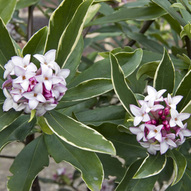
Early Spring Flowering Shrubs for your Garden
I discovered this plant two weeks ago on one of my routine garden audits. I walked into a client’s back garden and was overwhelmed by the sweet fragrance. As I walked around the garden I came across a fabulous evergreen medium sized shrub flowering its little heart out. It had variegated long green glossy leaves with pale purple clusters of fragment flowers and it was growing very happily under the shadow of a neighbour’s conifer tree. The soil around it was damp and it did not seem to be getting a lot of sunlight. It was Daphne odora “Aureomarginata”. I think it would make a superb addition to any garden, giving it a lift over the winter and early spring months. Needless to say I have now purchased one and have planted it in a semi-shady position in the garden.
Most Daphne prefers to be out of direct sunlight in a semi shade and neutral soil if possible. If you have acidic soil when planting Daphne’s add some lime or lime free compost. Prune with caution as Daphne does not respond well to hard pruning and can often suffer from die back so choose your variety carefully for the space you have in mind in your garden. Other varieties include Daphne X medfordensis which is smaller, a perfect addition to a rock garden and Daphne odora F. Alba, a good container plant.
Kerria Japonica “Pleniflora”– (Bachelors Buttons) is a deciduous shrub that has lovely fluffy double yellow flowers on bear green stems in early spring. It is my favourite spring flowering shrub as it gives the garden a lift is one of the first cut flowers of the year brought from garden to house. It will tolerate any soil types but prefers a moist and well-drained soil. It will take an exposed or sheltered site and can grow to a height of up to 3 metres if allowed. It is recommended to prune Kerria immediately after flowering, cutting out 1 in every 3 stems to ground level each year. It is a beautiful interesting shrub and is a prefect addition to a spring flower arrangement.
Sarcococca hookeriana produces fragrant aromatic white flowers in winter/spring and then black berries are carried on the stems throughout summer. It has dark glossy leaves and is usually slow growing up to 24 inches in height. It tolerates shade and is very easy to grow. It is also great plant for flower arranging.
The other variety of Sarcococca is humilis also known as sweet box. This variety could soon be a replacement for Box hedging as box is becoming susceptible to a fungal disease (box blight) which needs to be treated with fungicides. Sarcococca suckers freely so this could prove to be a nuisance, but seedlings can be dug out and propagated elsewhere.
There are many other spring flowering shrubs that will be making a splash of colour in the garden over the early weeks off spring; here are a few to try
Abelia chinensis, Camellias, Forsythias, Deutzias, Hamamelis X intermedia and Viburnums
I discovered this plant two weeks ago on one of my routine garden audits. I walked into a client’s back garden and was overwhelmed by the sweet fragrance. As I walked around the garden I came across a fabulous evergreen medium sized shrub flowering its little heart out. It had variegated long green glossy leaves with pale purple clusters of fragment flowers and it was growing very happily under the shadow of a neighbour’s conifer tree. The soil around it was damp and it did not seem to be getting a lot of sunlight. It was Daphne odora “Aureomarginata”. I think it would make a superb addition to any garden, giving it a lift over the winter and early spring months. Needless to say I have now purchased one and have planted it in a semi-shady position in the garden.
Most Daphne prefers to be out of direct sunlight in a semi shade and neutral soil if possible. If you have acidic soil when planting Daphne’s add some lime or lime free compost. Prune with caution as Daphne does not respond well to hard pruning and can often suffer from die back so choose your variety carefully for the space you have in mind in your garden. Other varieties include Daphne X medfordensis which is smaller, a perfect addition to a rock garden and Daphne odora F. Alba, a good container plant.
Kerria Japonica “Pleniflora”– (Bachelors Buttons) is a deciduous shrub that has lovely fluffy double yellow flowers on bear green stems in early spring. It is my favourite spring flowering shrub as it gives the garden a lift is one of the first cut flowers of the year brought from garden to house. It will tolerate any soil types but prefers a moist and well-drained soil. It will take an exposed or sheltered site and can grow to a height of up to 3 metres if allowed. It is recommended to prune Kerria immediately after flowering, cutting out 1 in every 3 stems to ground level each year. It is a beautiful interesting shrub and is a prefect addition to a spring flower arrangement.
Sarcococca hookeriana produces fragrant aromatic white flowers in winter/spring and then black berries are carried on the stems throughout summer. It has dark glossy leaves and is usually slow growing up to 24 inches in height. It tolerates shade and is very easy to grow. It is also great plant for flower arranging.
The other variety of Sarcococca is humilis also known as sweet box. This variety could soon be a replacement for Box hedging as box is becoming susceptible to a fungal disease (box blight) which needs to be treated with fungicides. Sarcococca suckers freely so this could prove to be a nuisance, but seedlings can be dug out and propagated elsewhere.
There are many other spring flowering shrubs that will be making a splash of colour in the garden over the early weeks off spring; here are a few to try
Abelia chinensis, Camellias, Forsythias, Deutzias, Hamamelis X intermedia and Viburnums

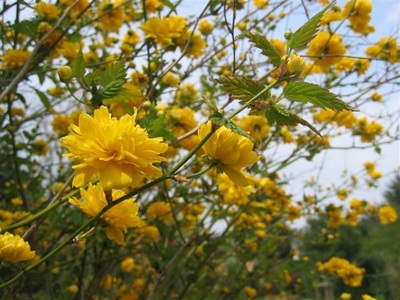
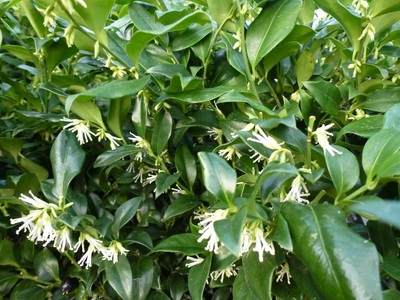
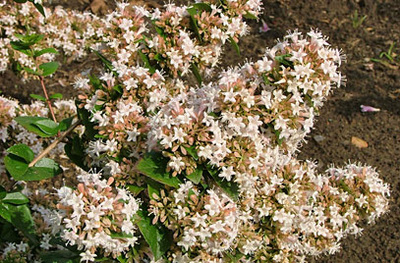
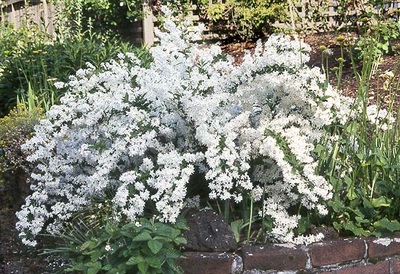
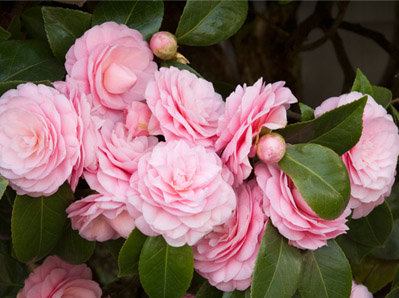
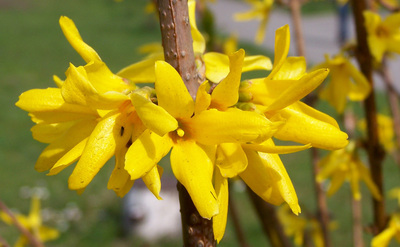
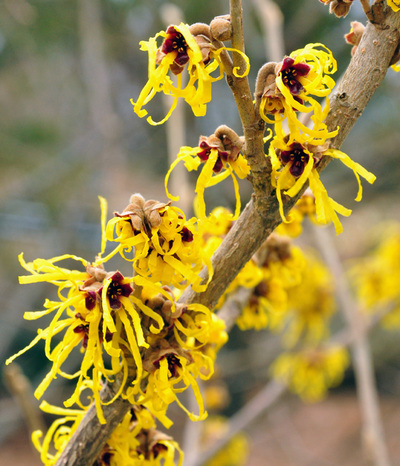

 RSS Feed
RSS Feed

